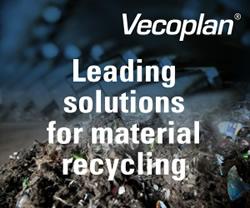The recently launched large format modules have a direct impact on the balance of system (BOS) installation cost reductions sought after by these members of the PV system value chain.
 210mm-cell PV Modules Set the Stage for Further LCOE Reduction
210mm-cell PV Modules Set the Stage for Further LCOE Reduction

William Porter, Technical Sales Engineer | Canadian Solar Inc.
The global solar industry is on the verge of getting a boost to its competitive edge, as production begins of large format, 210mm-cell modules. Utility-scale solar projects have played a key role in the energy transition by generating some of the lowest prices of electricity to utility companies and energy offtakers. Project developers, designers, installers and operators are in continuous pursuit of new ways to drive down the levelized cost of energy (LCOE) associated with large ground-mounted PV power plants. The recently launched large format modules have a direct impact on the balance of system (BOS) installation cost reductions sought after by these members of the PV system value chain.
These new PV modules utilize the largest wafer format currently available (210mm) and the latest module construction technologies. When combined with Canadian Solar’s patented double-sided PERC cell technology, they achieve frontside power ratings up to 665W with efficiencies up to 21.4%. Module technologies implemented on these new products include half-cut cells, dual glass construction for bifacial modules, multi-busbars, and hetero type ribbon (HTR) to reduce cell gaps. The result is a high-power, high-reliability module that can be utilized to build exceptionally performing PV power plants. Rigorous testing has been performed on Canadian Solar’s modules with results showing low hot-spot risk, industry leading LID/LeTID degradation rates and increased performance in low light conditions.
In addition to high performance and reliability, the BOS costs are significantly reduced on a $/Wdc basis, due to reductions in transportation costs, BOS material quantities, and labor hours required to install the modules. These increases in savings are driven directly by the higher power and efficiency ratings, as well as lower operating voltages associated with the larger cell and module formats. A direct comparison between smaller module formats and the 210mm modules is shown below for a 1500Vdc tracker:
Transportation cost reductions are achieved by the ability to package and arrange more wattage into 40’ shipping containers. Comparing wattage per container for 450W modules vs. 660W BiHiKu7 modules results in the following:
450W module: 33 pcs x 20 pallets x 450W = 0.297 MW
BiHiKu7: 31 pcs x 17 pallets x 660W = 0.348 MW
Canadian Solar is actively working with industry partners including developers, EPCs, mounting system manufacturers, and inverter manufacturers to deploy this new era of PV modules to the industry. Compatibility has been confirmed with mounting system manufacturers including NEXTracker, Array Technologies, ArcTech Solar, PVH and Soltec, with discussions and testing ongoing with other manufacturers. In-depth discussions are being held with mainstream inverter manufacturers in the industry as well. Currently, Sun Power, Huawei, Jinlong, Fimer, SMA, and other inverter manufacturers have provided solutions for high power modules and are continuously optimizing their designs.
The photovoltaic industry is moving towards a new era of high-power modules above 600W. With frontside power ratings up to 665W, Canadian Solar HiKu7 and BiHiKu7 modules have already been mass-produced and supplied to the global market and will soon be available in North America. In addition, Canadian Solar is actively cooperating with material suppliers and downstream customers to develop and provide one-stop solutions for 600W+ modules to reduce the LCOE of solar PV power plants.
The content & opinions in this article are the author’s and do not necessarily represent the views of AltEnergyMag
Comments (0)
This post does not have any comments. Be the first to leave a comment below.
Featured Product

